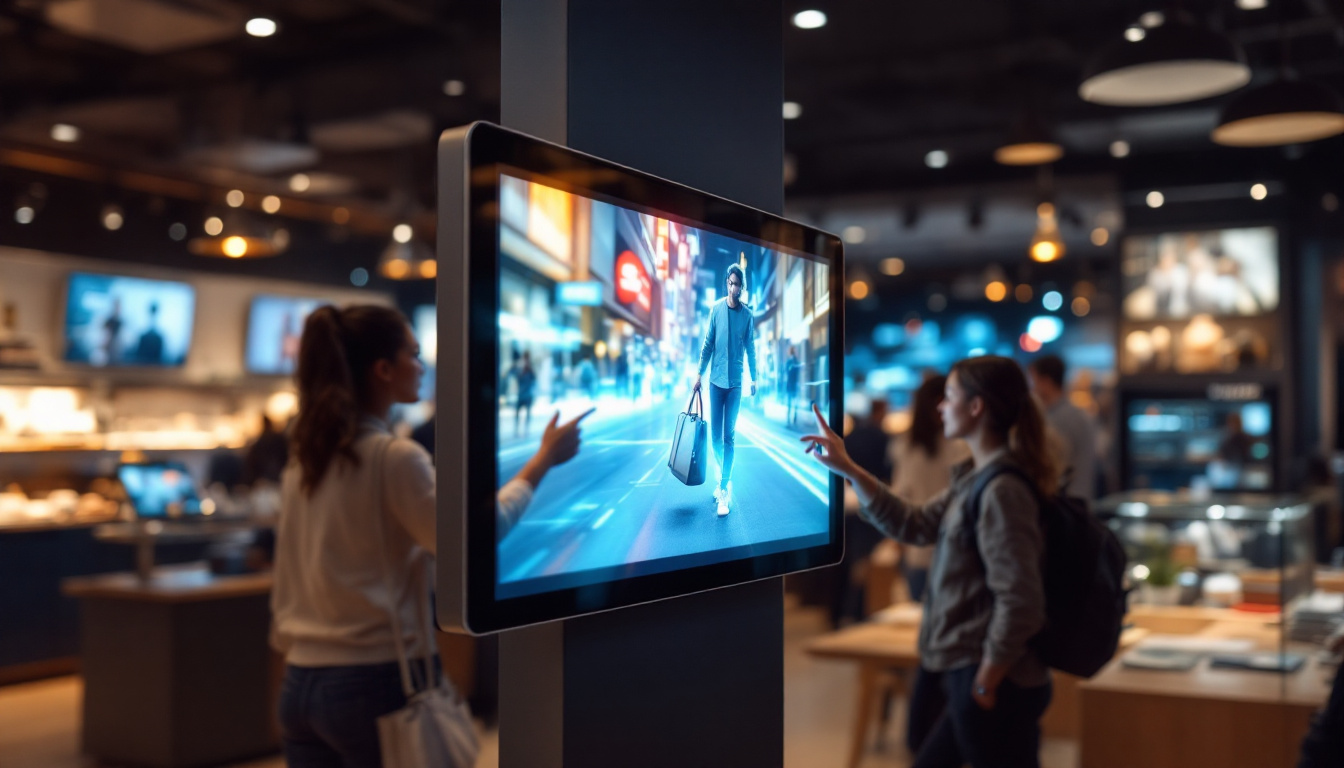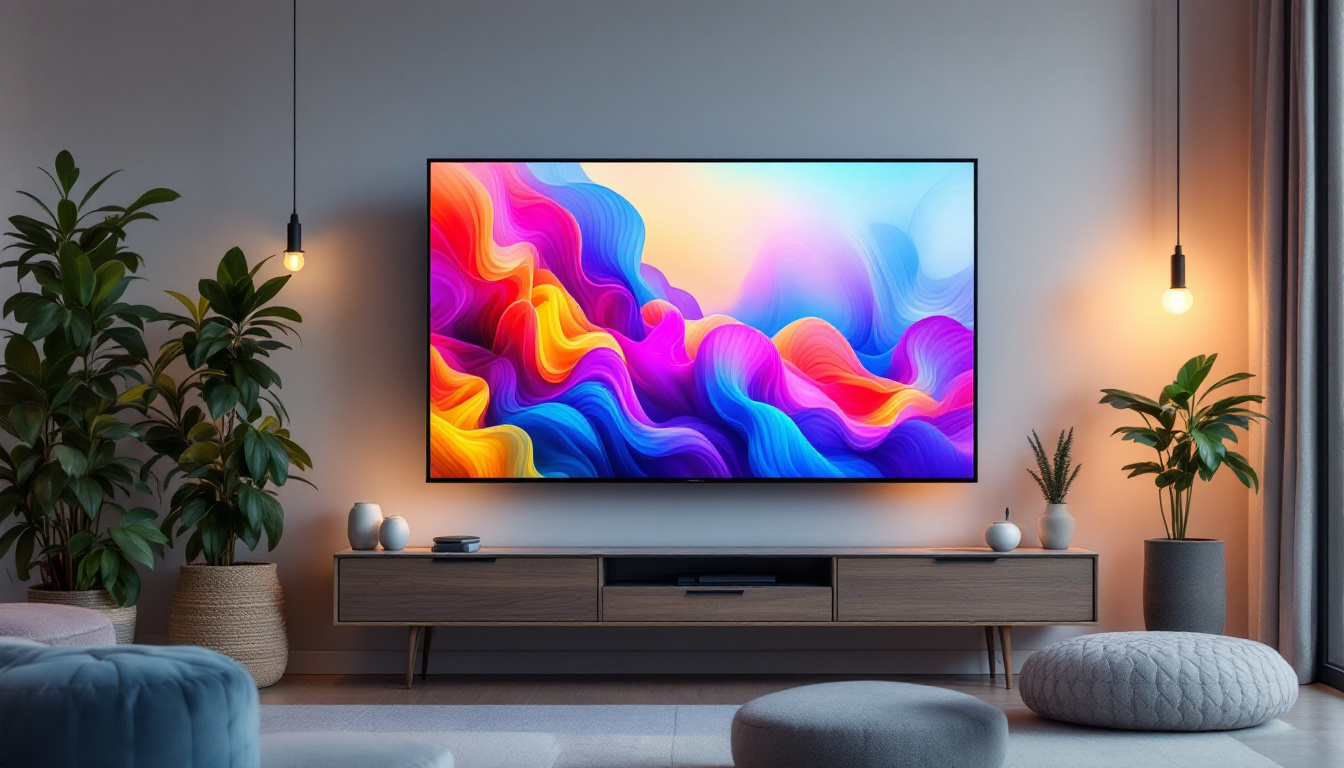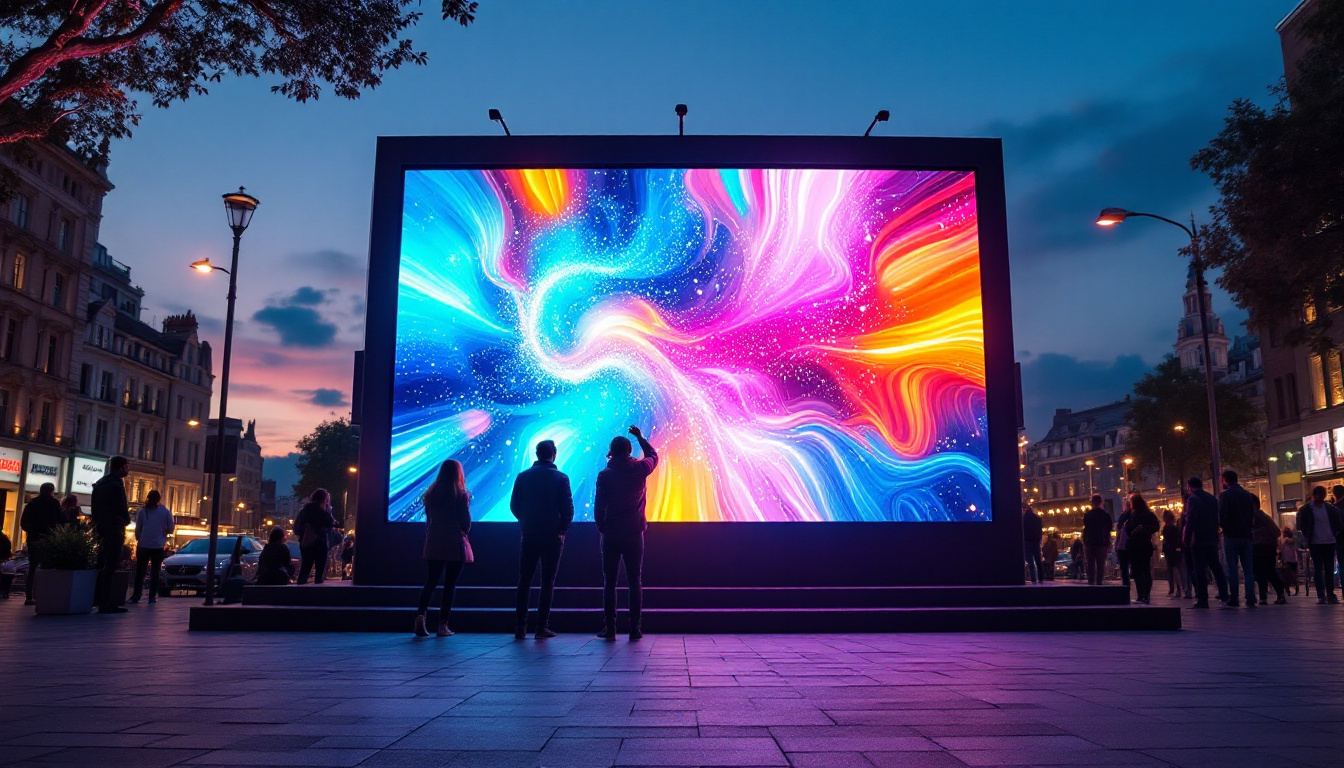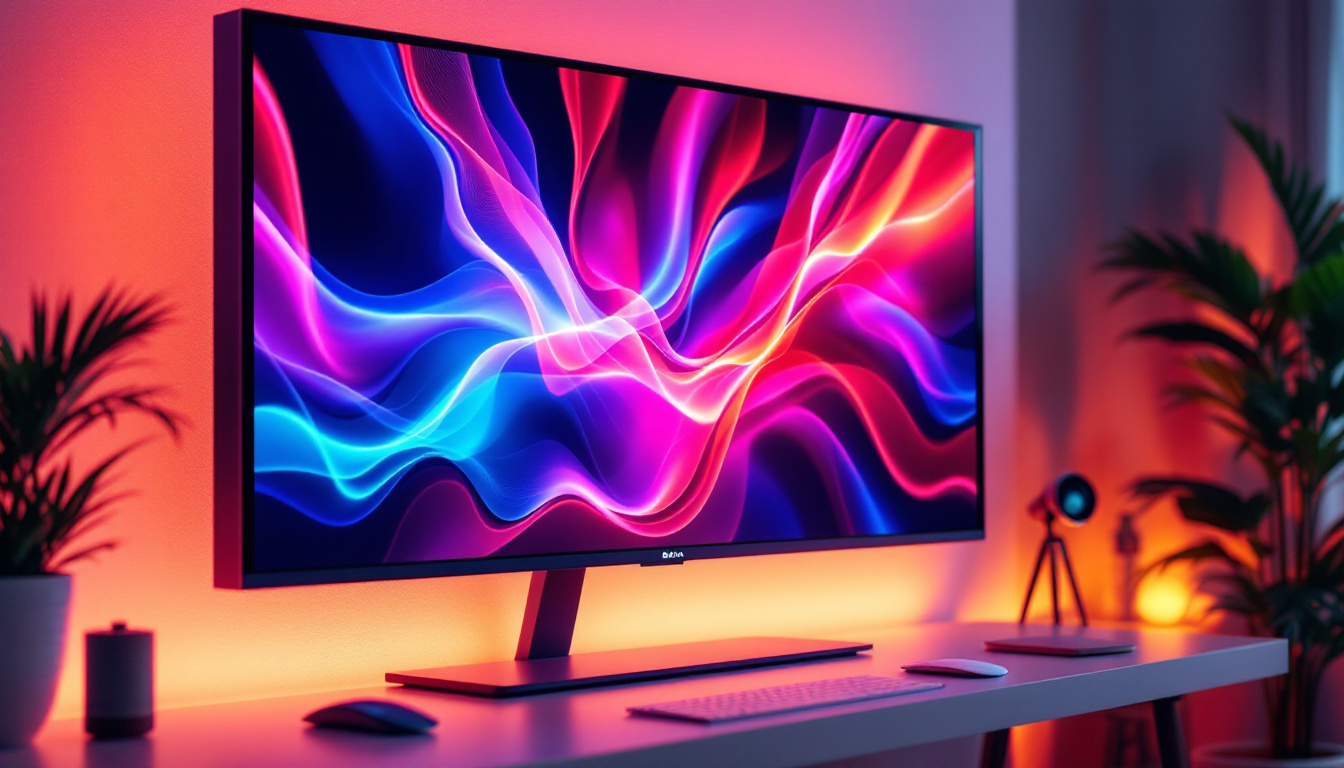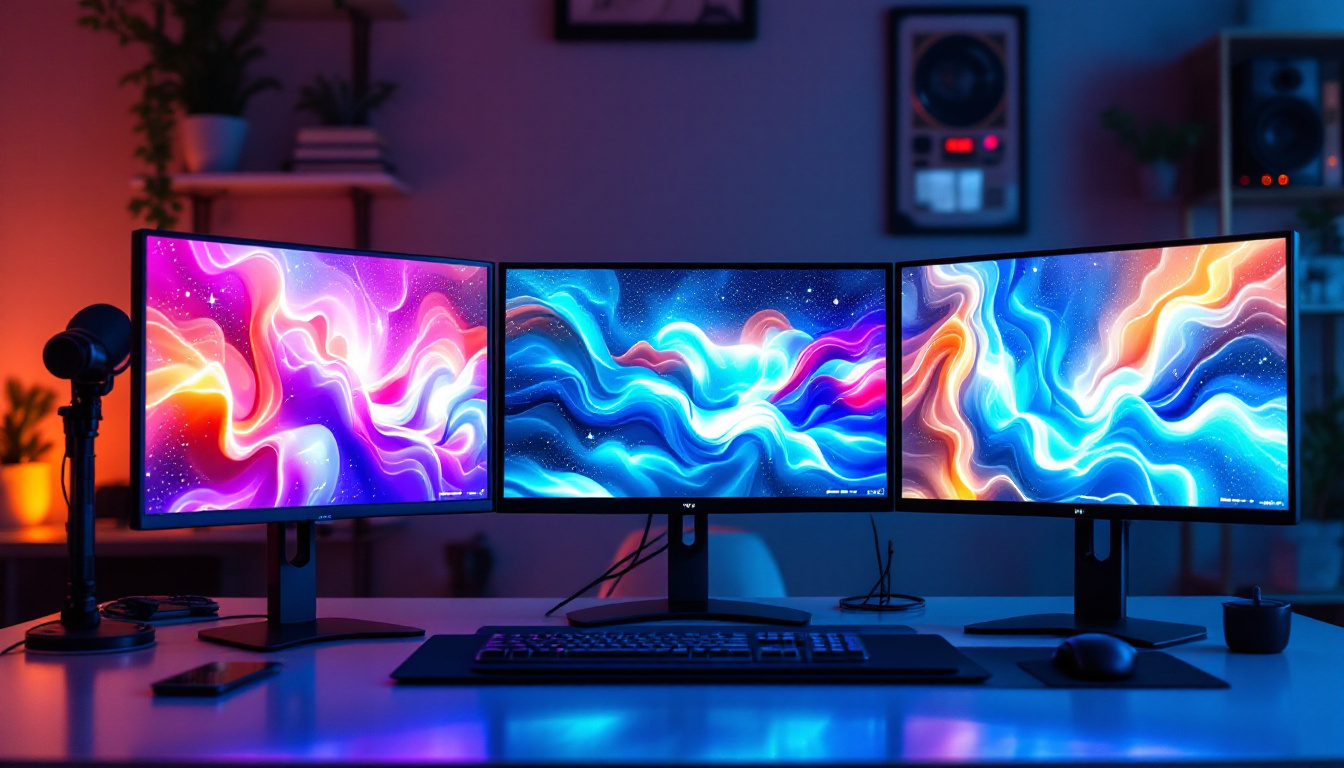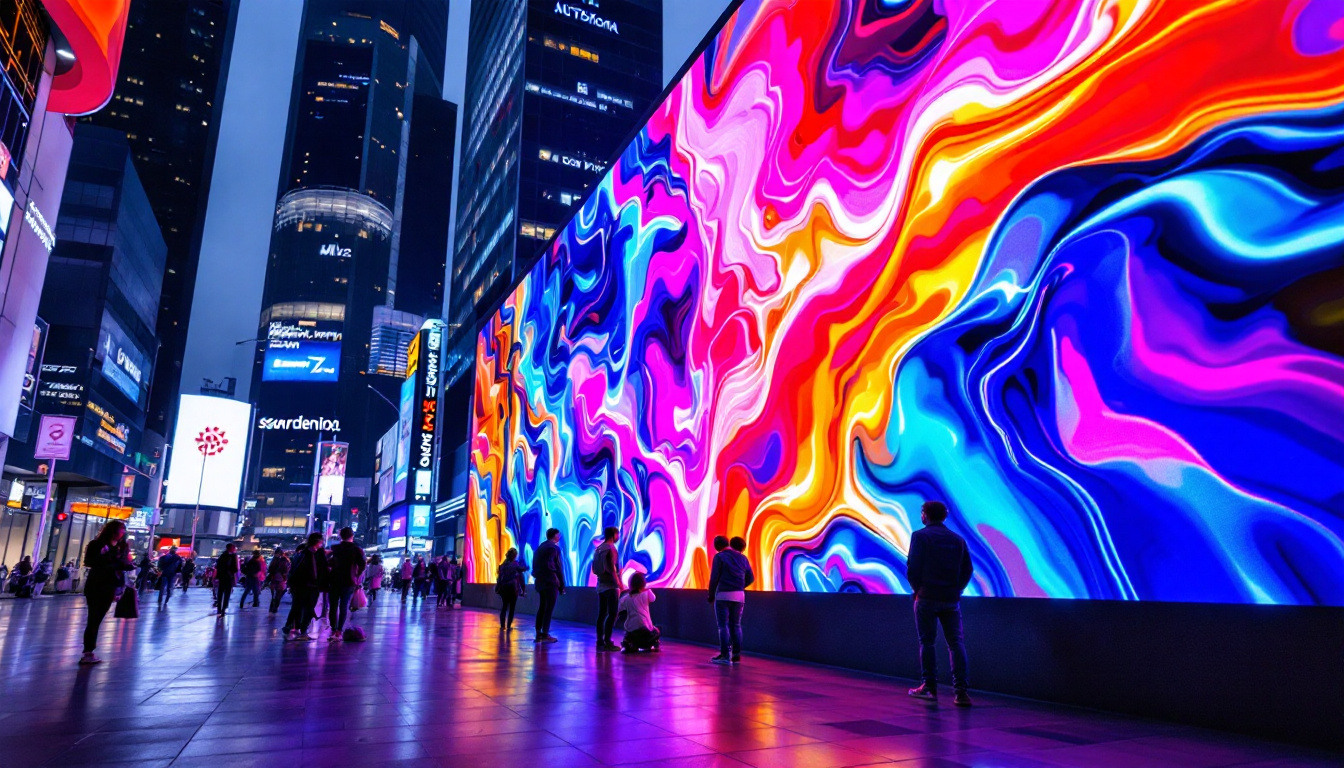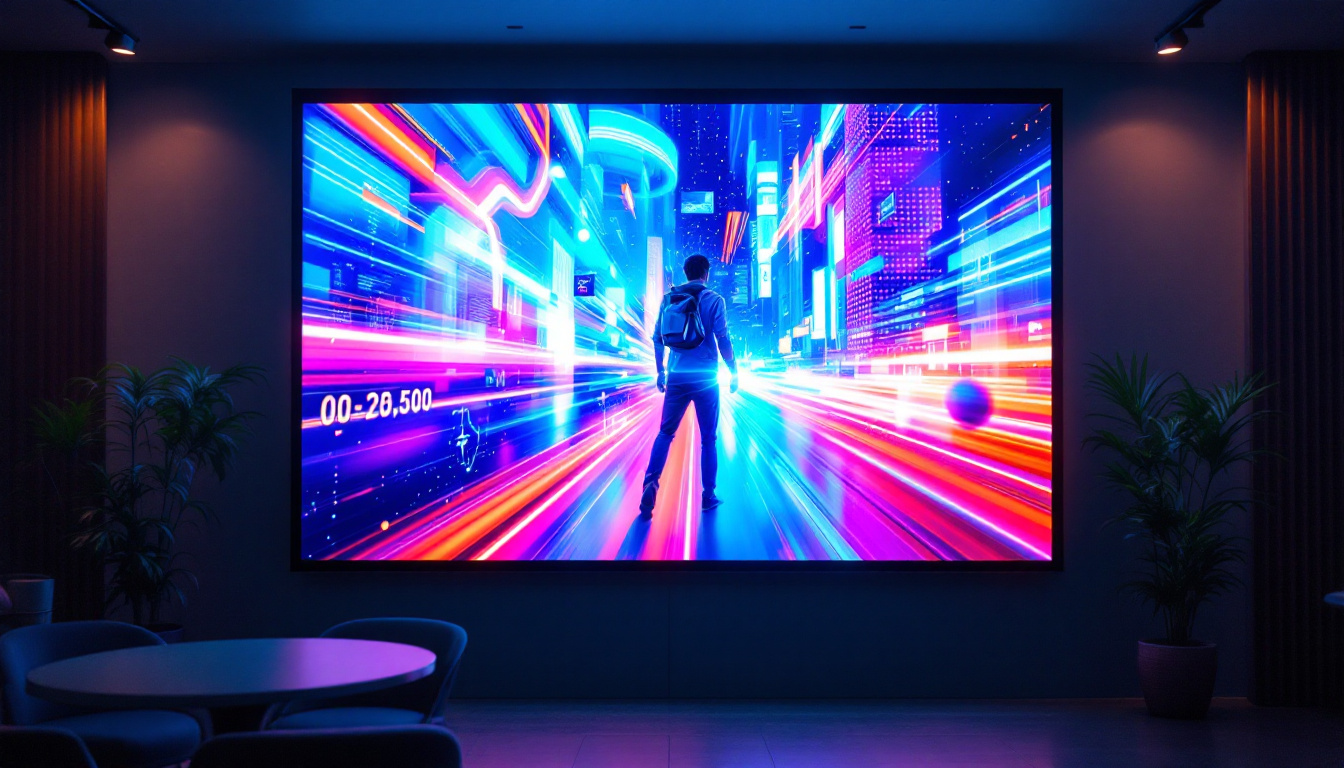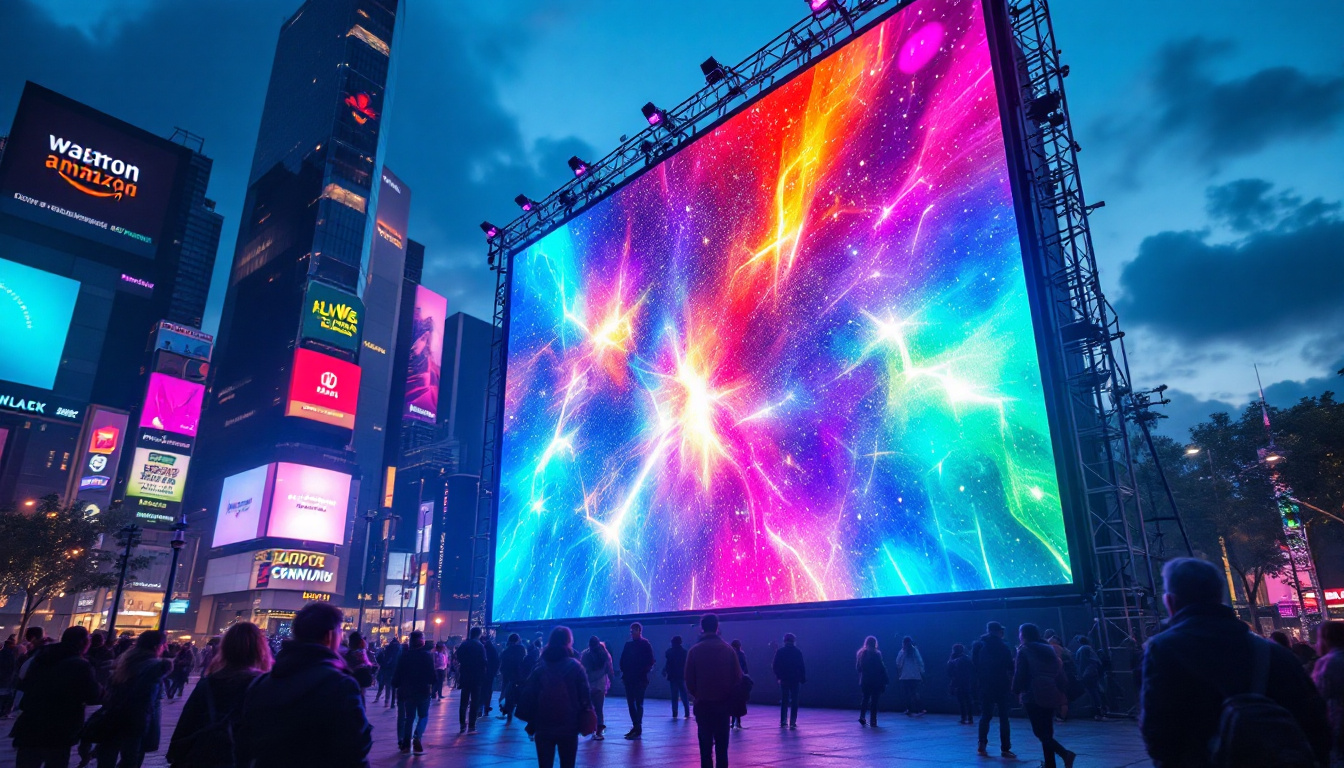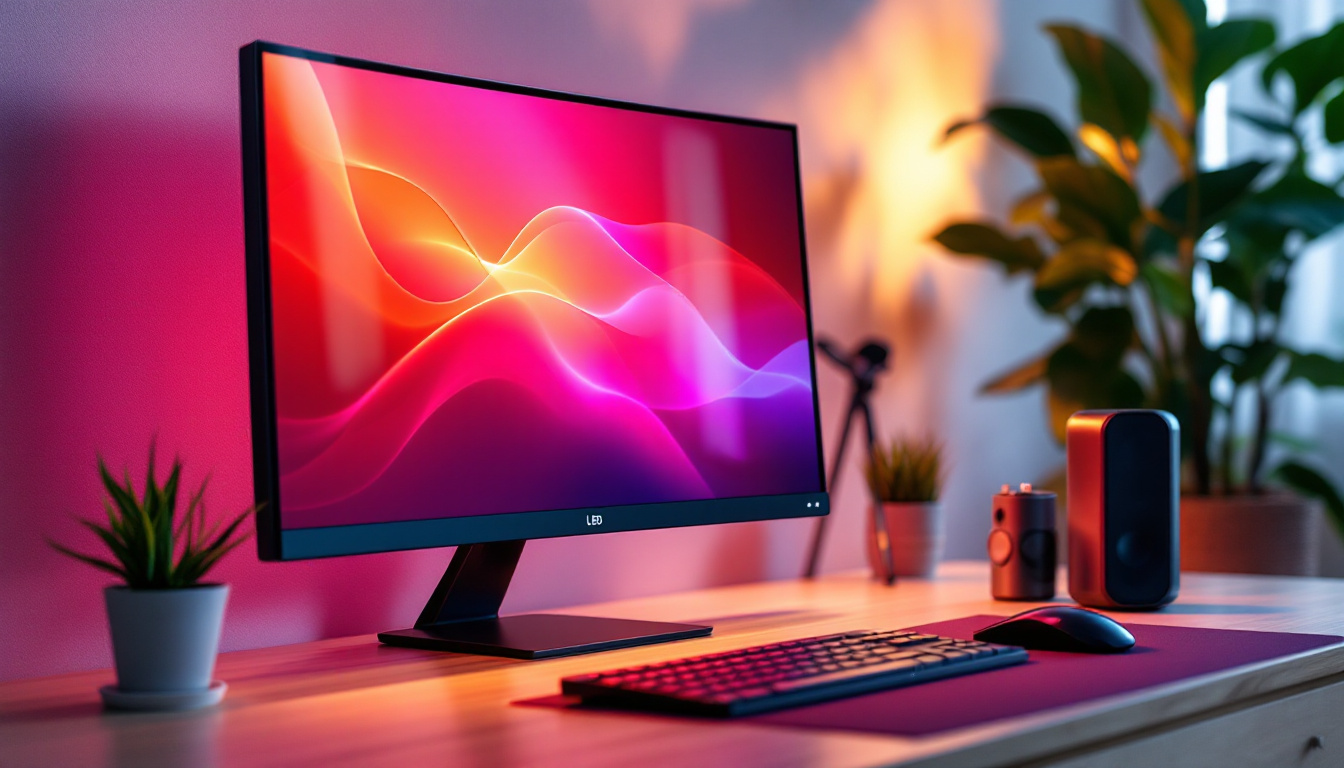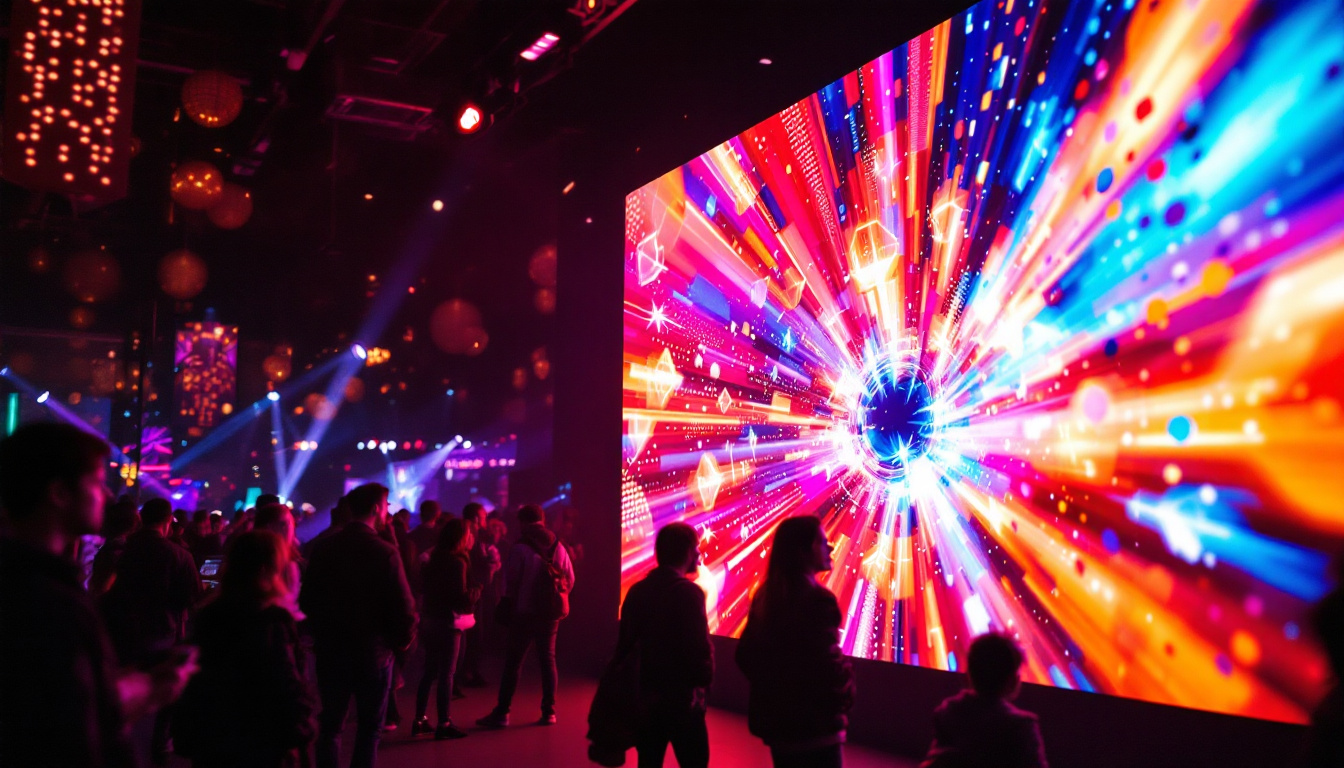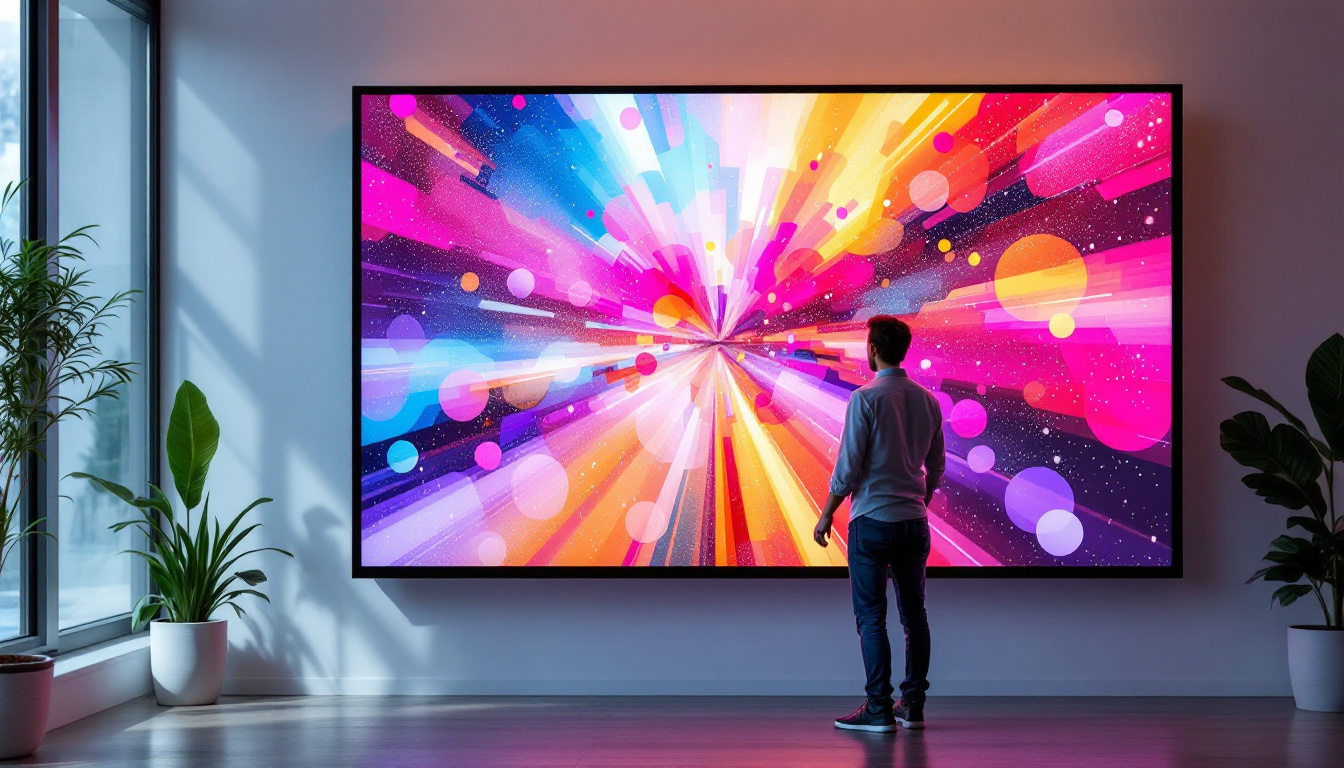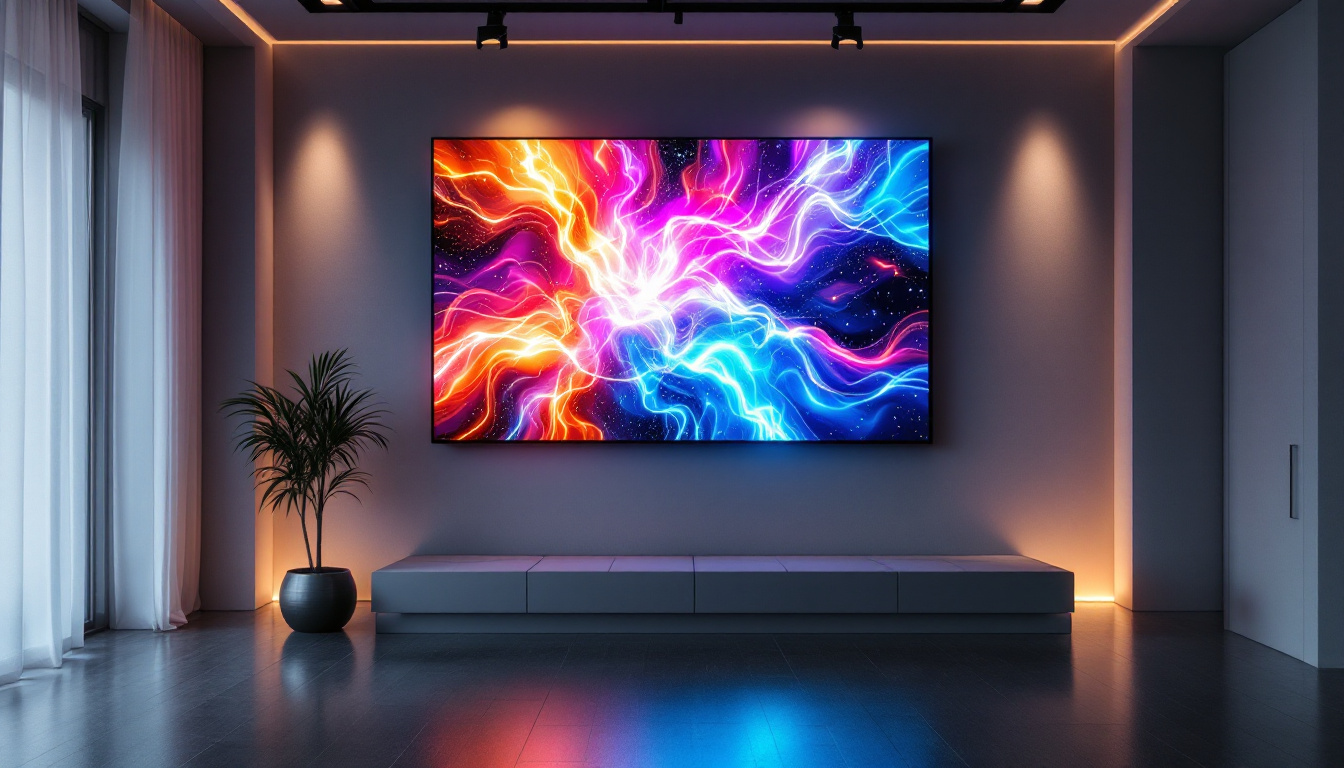The advent of 4K video technology has revolutionized the way content is consumed, offering unparalleled clarity and detail. As more consumers seek to enhance their viewing experience, understanding the role of LED displays in 4K video playback becomes essential. This article delves into the intricacies of 4K video players and the LED displays that bring these high-resolution images to life.
Understanding 4K Video Technology
4K video, also known as Ultra High Definition (UHD), boasts a resolution of 3840 x 2160 pixels, which is four times that of Full HD (1920 x 1080). This increase in pixel density allows for more detailed and sharper images, making it particularly appealing for large screens where individual pixels can be discerned in lower resolutions. The clarity and precision of 4K video not only enhance the viewing experience but also open up new creative possibilities for filmmakers and content creators, allowing them to capture and present their visions with unprecedented detail.
As the demand for high-quality video content grows, many streaming services, Blu-ray formats, and gaming consoles have adopted 4K capabilities. This shift has prompted the development of 4K video players that can efficiently decode and render this high-resolution content, ensuring an optimal viewing experience. Furthermore, the rise of 4K content has led to an increase in the production of original programming, with many filmmakers and studios investing in 4K technology to meet audience expectations for visual excellence.
The Benefits of 4K Resolution
One of the primary advantages of 4K resolution is its ability to provide a more immersive viewing experience. The increased detail allows viewers to see textures and nuances that were previously lost in lower resolutions. This is particularly beneficial for nature documentaries, action films, and video games, where visual fidelity can significantly enhance the storytelling. In gaming, for instance, the ability to see intricate details in environments can lead to a more engaging and realistic experience, drawing players deeper into the virtual worlds they explore.
Additionally, 4K content is often accompanied by improved color depth and dynamic range. Many 4K displays support High Dynamic Range (HDR), which enhances contrast and color accuracy. This combination of high resolution and HDR results in vibrant, lifelike images that draw viewers into the content. The richer color palette and enhanced brightness levels allow for a more nuanced portrayal of scenes, making everything from sunsets to shadowy interiors appear more realistic and visually striking.
Challenges of 4K Video Playback
Despite its advantages, 4K video playback comes with challenges. The primary concern is the bandwidth required for streaming high-resolution content. Users with slower internet connections may experience buffering or reduced quality. As a result, many streaming services offer adaptive bitrate streaming, which adjusts the quality based on the user’s available bandwidth. This technology ensures that viewers can still enjoy content without interruptions, although it may mean sacrificing some of the stunning visual quality that 4K offers in ideal conditions.
Moreover, not all devices are equipped to handle 4K video playback. Compatibility issues can arise, particularly with older televisions and video players. Therefore, it is crucial for consumers to ensure that their devices are capable of supporting 4K content before investing in a new video player or display. Additionally, the cost of upgrading to 4K-capable equipment can be a barrier for some, as high-quality 4K TVs and players often come with a premium price tag. As technology continues to evolve, however, prices are gradually becoming more accessible, making 4K video a more attainable option for a broader audience.
The Role of LED Displays in 4K Video Playback
LED displays have become the standard for modern televisions and monitors, largely due to their ability to deliver bright, vibrant images with excellent contrast ratios. When paired with 4K video players, LED displays can showcase the full potential of high-resolution content.
LED technology works by using light-emitting diodes to illuminate the screen, allowing for thinner designs and improved energy efficiency compared to traditional LCD displays. This technology not only enhances the viewing experience but also contributes to the longevity and sustainability of the devices.
Types of LED Displays
There are several types of LED displays, each with its unique characteristics and advantages. The most common types include:
- Standard LED: These displays utilize a backlighting system that uses LEDs to illuminate the screen. They offer good brightness and color reproduction, making them suitable for a variety of viewing environments.
- OLED (Organic LED): Unlike standard LED displays, OLED panels emit their own light, resulting in deeper blacks and superior contrast ratios. This technology is particularly effective for displaying HDR content, making it a popular choice for high-end 4K televisions.
- QLED (Quantum Dot LED): QLED technology employs quantum dots to enhance color accuracy and brightness. This type of display is known for its vibrant colors and is often used in premium 4K televisions.
How LED Displays Enhance 4K Video Quality
The synergy between 4K video players and LED displays creates a visually stunning experience. LED technology allows for higher brightness levels, which is essential for showcasing the intricate details of 4K content. Furthermore, the improved color accuracy provided by advanced LED technologies like OLED and QLED ensures that viewers see the content as intended by the creators.
Moreover, LED displays can achieve faster refresh rates, reducing motion blur during fast-paced scenes. This is particularly important for action movies and sports broadcasts, where clarity and fluidity are paramount. As a result, the combination of 4K resolution and LED display technology offers an unparalleled viewing experience that captivates audiences.
Choosing the Right 4K Video Player
When selecting a 4K video player, several factors must be considered to ensure compatibility and optimal performance. The right choice will depend on individual preferences and the specific requirements of the viewing setup.
Key Features to Look For
Several features are essential when evaluating 4K video players:
- Video Format Support: Ensure that the player supports various 4K formats, including HEVC (H.265), VP9, and AV1. This compatibility ensures that users can play a wide range of content without issues.
- HDR Support: Look for players that support HDR formats such as HDR10, Dolby Vision, or HDR10+. This feature enhances the dynamic range and color accuracy of the content.
- Streaming Capabilities: Many 4K video players come with built-in streaming apps for popular services like Netflix, Amazon Prime Video, and Disney+. Ensure that the player has access to the desired streaming platforms.
Connectivity Options
Connectivity is another crucial aspect to consider when choosing a 4K video player. HDMI 2.0 or higher is recommended for optimal performance, as it supports the bandwidth required for 4K content at 60 frames per second. Additionally, consider players with USB ports for direct playback from external drives, as well as Ethernet and Wi-Fi options for seamless streaming.
Some players also offer additional features like Bluetooth connectivity, which can be useful for connecting wireless audio systems or headphones, enhancing the overall viewing experience.
Setting Up Your 4K Video Player and LED Display
Once the right 4K video player and LED display have been selected, proper setup is essential to maximize performance. This includes positioning the display, configuring settings, and ensuring an optimal viewing environment.
Optimal Display Placement
Placement of the LED display can significantly impact the viewing experience. Ideally, the screen should be at eye level when seated, and the distance between the viewer and the screen should be appropriate for the size of the display. A general guideline is to sit at a distance of 1 to 1.5 times the diagonal size of the screen for 4K content, allowing viewers to appreciate the increased detail without straining their eyes.
Additionally, consider the room’s lighting conditions. LED displays perform best in environments with controlled lighting. Reducing glare from windows and using curtains or shades can enhance the viewing experience, especially for HDR content.
Configuring Settings for Optimal Performance
After positioning the display, configuring the settings on both the 4K video player and the LED display is crucial. This includes adjusting brightness, contrast, and color settings to suit personal preferences and the specific content being viewed. Many modern displays come with preset modes tailored for different types of content, such as movies, sports, or gaming.
Enabling HDR settings on both the player and display is essential to fully experience the enhanced dynamic range and color accuracy that 4K content offers. Regularly updating the firmware of both devices can also ensure optimal performance and access to the latest features.
Future Trends in 4K Video and LED Displays
The landscape of 4K video technology and LED displays is constantly evolving. As technology advances, several trends are emerging that will shape the future of video playback and viewing experiences.
Advancements in Display Technology
Future advancements in display technology promise even more immersive experiences. Innovations such as MicroLED and MiniLED are gaining traction, offering improved contrast ratios, color accuracy, and energy efficiency. These technologies could potentially replace traditional LED displays, providing consumers with even better viewing experiences.
Additionally, the integration of artificial intelligence in display technology is expected to enhance image processing, allowing for real-time adjustments to optimize picture quality based on the content being viewed.
The Rise of 8K Content
As 4K technology becomes the standard, the industry is beginning to explore 8K content. With a resolution of 7680 x 4320 pixels, 8K offers even greater detail and clarity. While 8K content is still limited, the development of 8K displays and players will likely become more prevalent in the coming years, pushing the boundaries of visual fidelity.
However, the transition to 8K will also present challenges, particularly regarding bandwidth and content availability. As with the shift from HD to 4K, consumers will need to adapt to new technologies and standards.
Conclusion
The combination of 4K video players and LED displays has transformed the way audiences experience visual content. With advancements in technology, consumers can enjoy stunning clarity, vibrant colors, and immersive experiences that were once unimaginable. Understanding the intricacies of these technologies, from resolution benefits to display types, is essential for anyone looking to enhance their viewing experience.
As the industry continues to evolve, staying informed about new developments and trends will ensure that viewers can make the most of their 4K video playback and LED display technology. Whether for home entertainment, gaming, or professional use, the future of video consumption is bright, and the possibilities are endless.
Discover the Future of Visual Experience with LumenMatrix
Ready to elevate your visual experience with the latest in 4K video and LED display technology? Look no further than LumenMatrix, a pioneer in creating dynamic and vibrant LED display modules for every setting. From the comfort of your living room to the excitement of a sports arena, our diverse range of solutions—including Indoor and Outdoor LED Wall Displays, Vehicle LED Displays, and more—ensures that you can find the perfect fit for your needs. Embrace the future of visual communication and check out LumenMatrix LED Display Solutions today to transform the way you share your message and captivate your audience.




